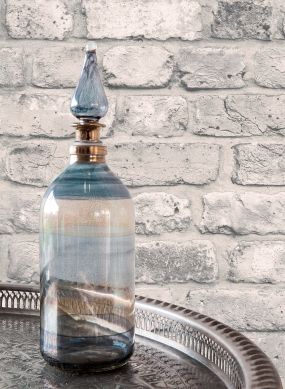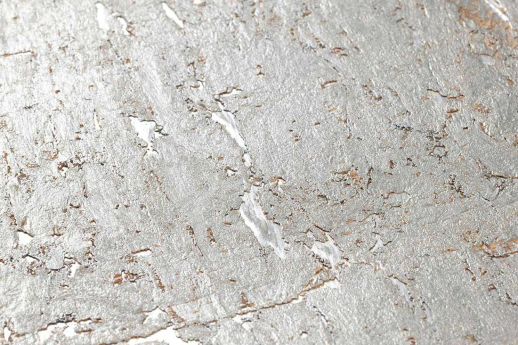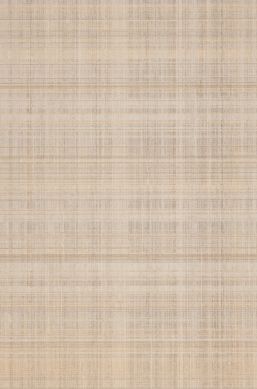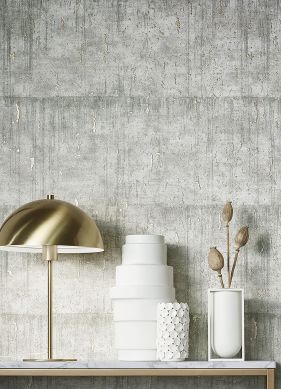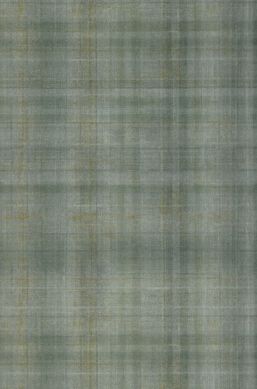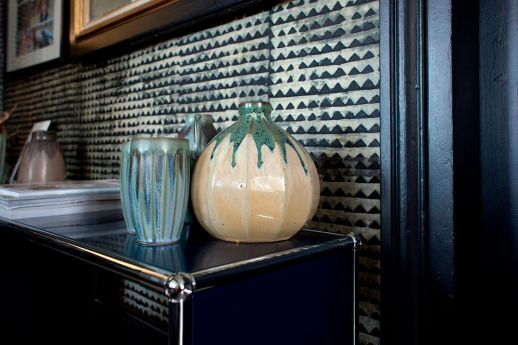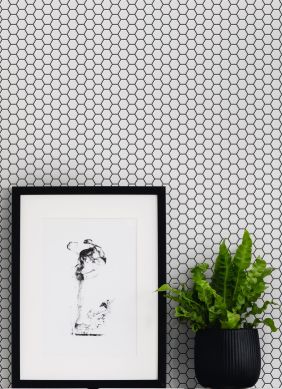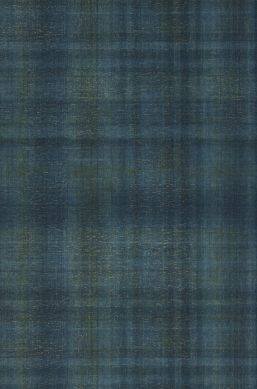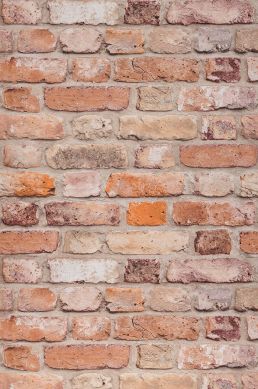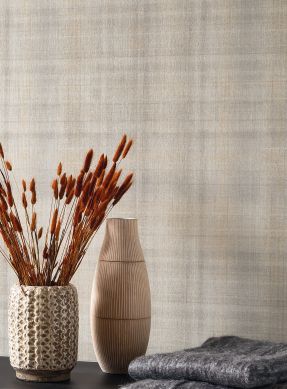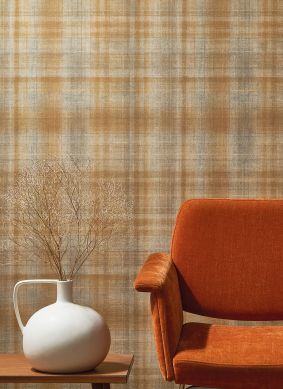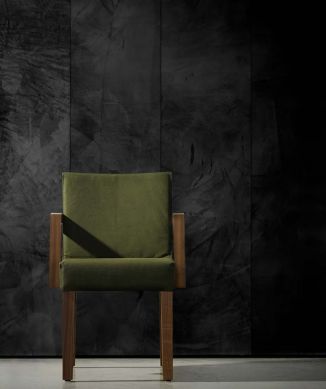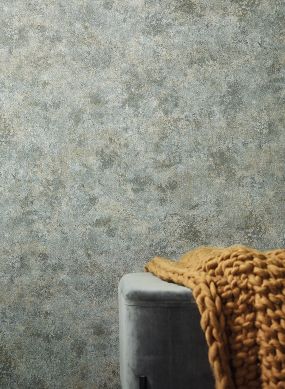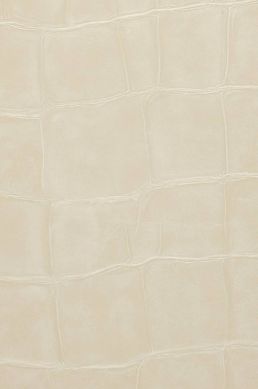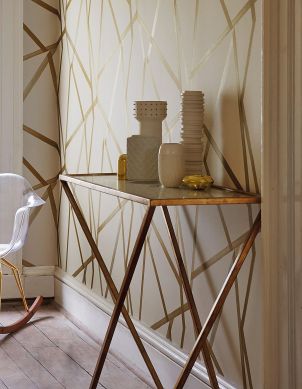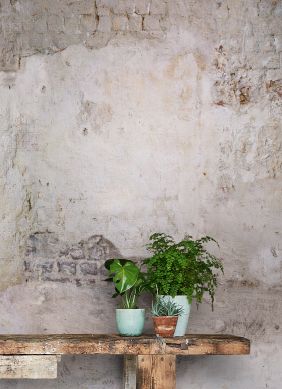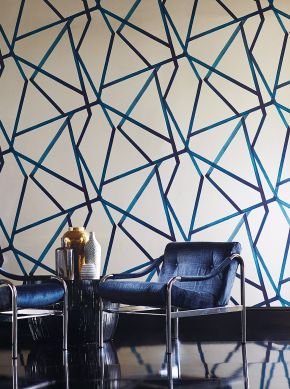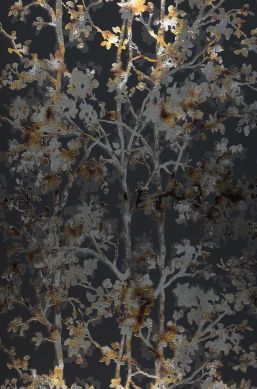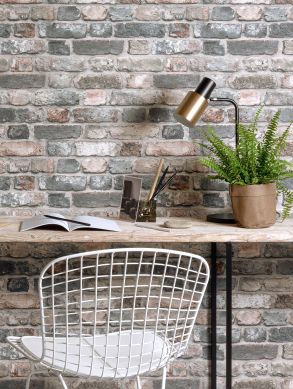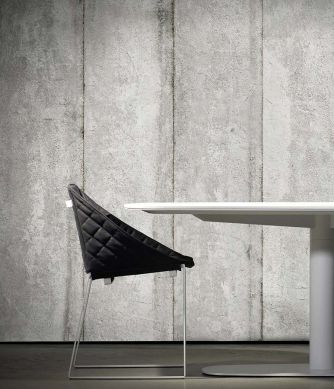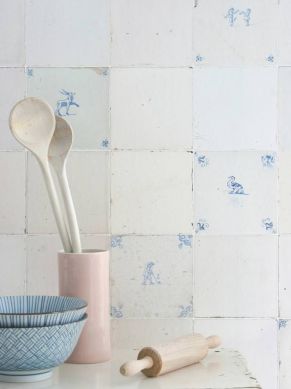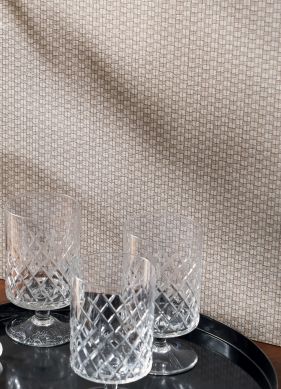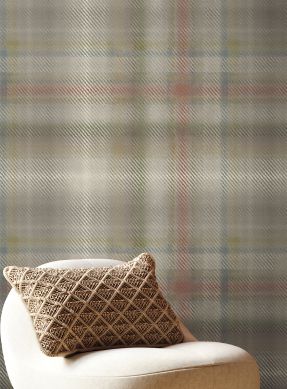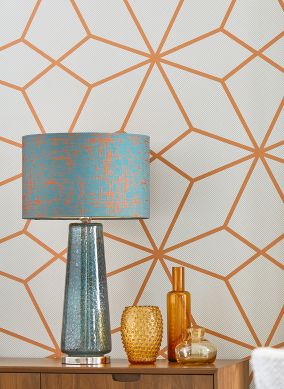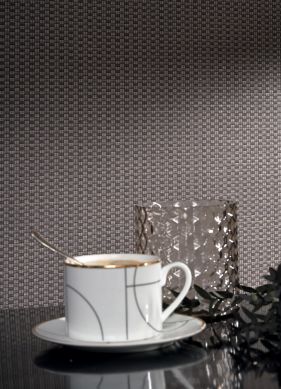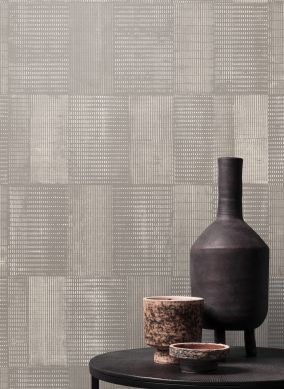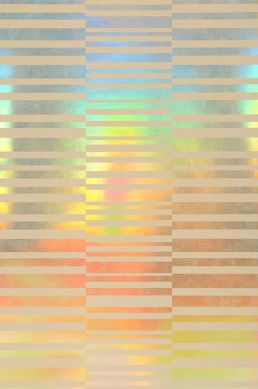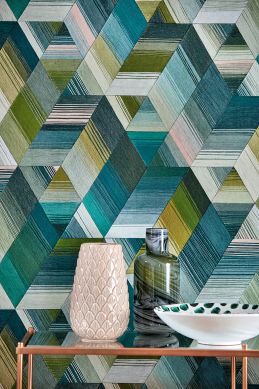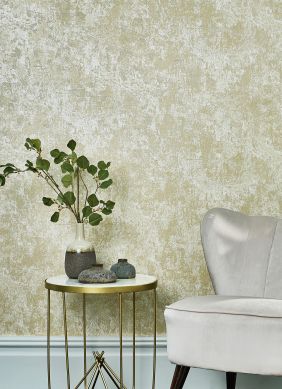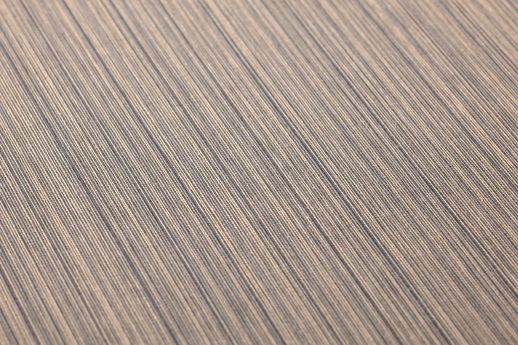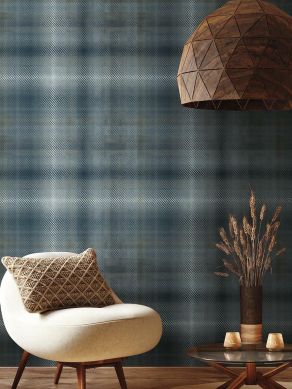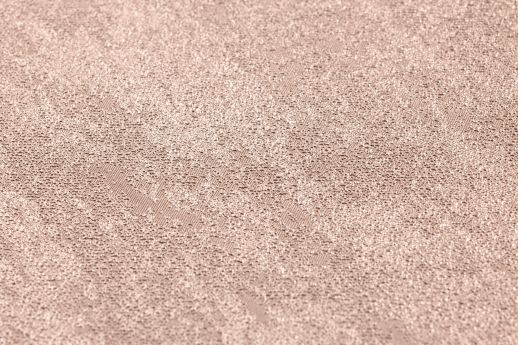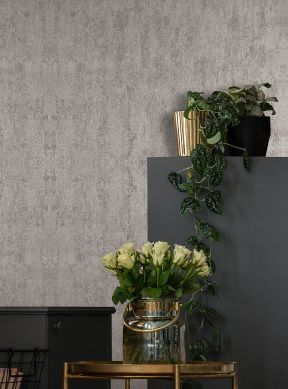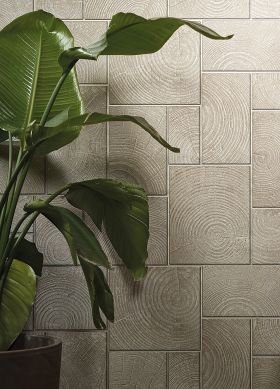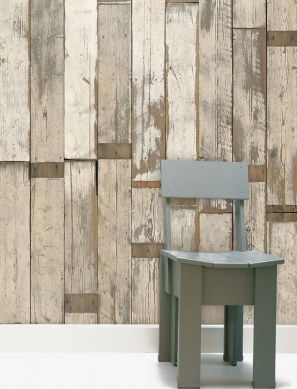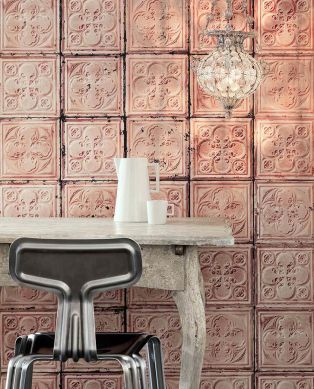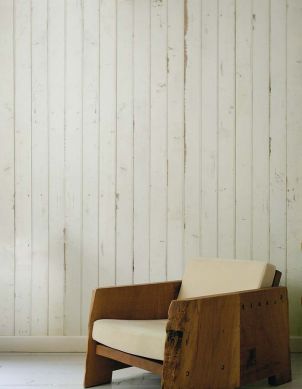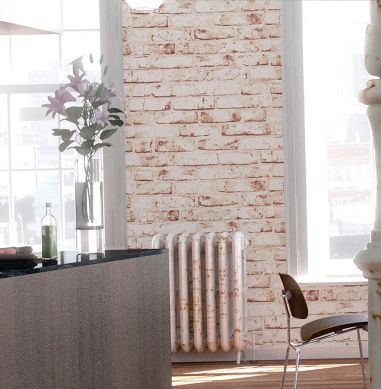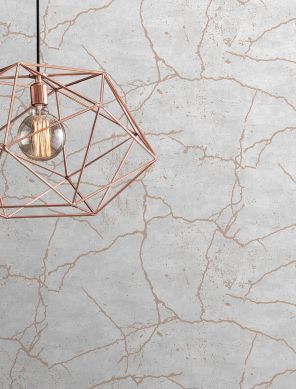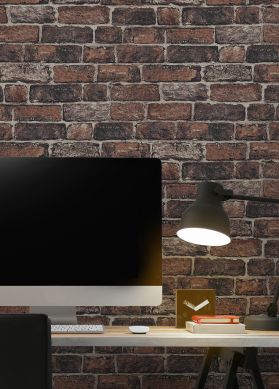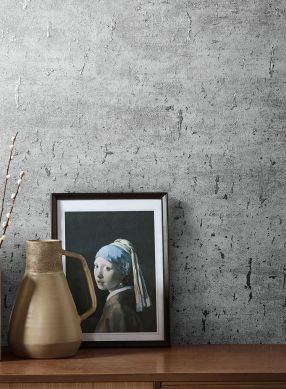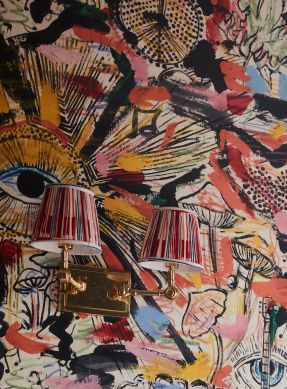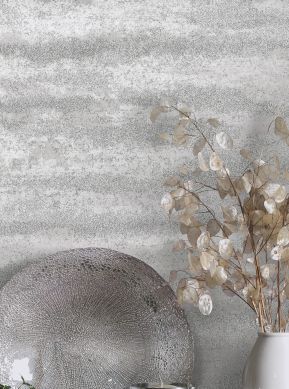Industrial Style Wallpaper
Industrial Style Wallpaper: The Guide
In order to accommodate the new concept of mass production at the beginning of the 20th century, gigantic factory halls with functional equipment were built. Many years later, the artists' movements of the 1960s and 1970s, especially in New York and London, discovered the now empty buildings as cheap, new living and working spaces and created what today is known as the Loft or Industrial Style. Unplastered exposed concrete, bare brick walls, rusty, tarnished or discoloured metal, heavily used and weathered wood determine the raw character of the Industrial Style.
Table of Contents
- What is the Industrial Style?
- Where did the idea for the Industrial Look originate?
- Which colours are typical for Industrial Style wallpaper designs?
- How do industrial wallpaper models recreate the look of unplastered factory walls?
- Which worn metals are imitated on industrial wallpaper models?
- Which wood looks are reproduced on Industrial style wallpaper?
- Which rooms are particularly suitable for Industrial Chic wallpaper?
- Why is the Industrial wallpaper look so popular?
- Our tips: Ideas for casual and charming industrial interiors
What is the Industrial Style?
The Industrial interior design style is based on the working ambience of old factory buildings which are characterised by geometric and minimalist architecture. Worn, rough surfaces and an imperfect, unfinished look are further style characteristics.
Interior design style based on the working ambience of old factory floors
When the era of industrialisation gained steam in the early 20th century, factories for the mass production of a large variety of goods had to be built. These large factory halls, which above all had to be pragmatic, robust and functional, are the inspiration for the Industrial Look with its rough charm which boasts a large and continuously growing fan base.
Geometric, minimalist architectural style
Historically, traditional factories were characterised by their strictly geometrical layout, an open floor plan and large windows. In contrast to the residential architecture of the time - and for obvious practical reasons - these buildings have no oriels, wall projections or niches. The design is based on straight lines and is relatively open-plan.
Worn and rough surfaces
In old factories, metal, concrete, brick and wood are the main materials used for walls, floors, furniture, tools and lamps. Industrial Chic surfaces are usually worn, rough and dull/matt due to heavy use and/or age and weathering.
Imperfect and unfinished look
You can't make an omelette without breaking eggs, as the saying goes. And in the factories of the age of industrialisation, everything was very much in motion, which is why the industrial style reflects an imperfect, non-conformist look that has something wild and rebellious about it. This is also due to the political and societal upheaval that was in full swing at the time.
Where did the idea for the Industrial Look originate?
The artist movements of the 1960s and 1970s made the Industrial Style popular. Many artists set up living areas and studios in abandoned factories. With his aptly named "Factory", Andy Warhol is probably the most famous representative of this trend.
Popular since the artist movement of the 60s and 70s
The up-and-coming artists' movement of the 60s and 70s established a new way of living, initially born out of necessity. Apartments in the inner cities of New York and London had become unaffordable for this target group, and abandoned factory buildings in more peripheral areas could be rented for very little money.
Living spaces and studios in abandoned factories
Living areas and studios were set up in historic factory halls which extended over several floors. The existing fixtures found a new use, but little or no renovation work was usually undertaken. Walls, floors and furnishings remained as they were when the new tenants moved in. Improvisation and creative recycling were the order of the day. The new "loft feeling" was born.
Pioneer Andy Warhol and his Factory
Famous Pop Art artist Andy Warhol, who also worked as a photographer, video artist, designer and entrepreneur, stage-managed his life in a former factory to perfection. This hub of creativity which later went down in art history as the "Silver Factory" was regarded as a glamorous meeting place for stars & starlets and served as a living room, private B&B and huge studio.
Which colours are typical for Industrial Style wallpaper designs?
Predominantly dark shades which are rarely pure but rather mixed and blurred, worn or weathered determine the colour palette of Industrial Style wallpaper. These include grey, red, blue, brown, white and black.
Grey
This neutral colour, a combination of black and white, appears in the Industrial Style in graduated nuances from classic concrete grey to cement grey and grey interspersed with other colours. Light grey and medium grey are amongst the main shades, whilst iron grey is one of the popular dark hues, especially in combination with iron furniture.
Red
Rust red is a characteristic colour of the Industrial look. In its natural state, rust has many intermediate shades that depend on oxidation levels: starting with a light, orange-red rust shade through reddish-brown to dark brown hues. Shading and gradients play an important role. Copper red and brick red also provide fantastic effects.
Blue
Dark blue creates an interesting contrast to wood and metal colours in the Industrial interior design style. Steel blue is an all-time favourite as it is a relaxed shade which appears cool and tidy, but also exudes depth and sophistication. Turquoise blue is often used for wallpaper that imitates corroded copper or walls with old layers of paint and plaster.
Brown
In terms of Industrial wallpapers, brown represents medium and dark wood colours and imitation leather, an important element of the sought-after Loft style. Other popular shades are copper brown and bronze brown, which are also the latest trend for metal wallpapers. Rust red offers harmonious and warm design options.
White
White, the colour of purity, symbolises clean industrial Chic, often represented by whitewashed bricks. Antique white indicates a worn character marked by time and in wallpaper designs is often represented by a faded, blurred colour structure. White can also be a component of several layers of paint on damaged plaster.
Black
Black is one of the favourite colours for robust metal looks in modern Industrial lofts. This achromatic colour has a very intense and dominant effect when combined with wood or concrete grey. Steel blue can be a high-contrast combination partner. To avoid it appearing too gloomy, sufficient natural light in the room is a must.
How do industrial wallpaper models recreate the look of unplastered factory walls?
Wallpaper with a deceptively real look is the ideal tool to create the pithy, raw appearance of unrendered factory walls. These models imitate visible brickwork, dilapidated plaster, bricks, rough concrete and cement structures.
Visible masonry looks
Visible masonry consists of bricks or other stones bonded by mortar. Interlockings can also be visible. Wallpaper models depicting an exposed brick wall behind a concrete façade are also very popular in the Loft style. In terms of colours and formats, stone and brick images on industrial wallpaper models are very multifaceted, just like they are in real life.
Damaged plaster effect
Damaged, crumbling plaster can uncover old layers of paint or rusty areas on metal structures. With its different colours, it creates movement in the room. The rugged appearance underlines the wild, unconventional component of the Industrial Look.
Bricks and masonry
Depending on the region where the factory buildings were built, either red or brown bricks would have been the preferred building material. On wallpaper, this inexpensive, robust and easy-to-use material is often represented as clinker composite masonry in graded shades from orange-red to dark brown. These wallpaper designs do not just add colour to the room, they also provide a sense of cosiness.
Rough concrete
Rough, coarsely structured concrete and smooth, unrendered exposed concrete are the modern building materials used in the factory buildings. But even these hardy materials get old and damaged when exposed to environmental influences. For this reason, their structures and looks come in a large variety of structures and colours. Concrete walls with cool, striking graffiti emphasise the urban flair.
Cement structures
Cement structures are the result of specific plastering and application techniques and the composition of the base material. Rough, porous, cracked, marbled structures are typical. Cement comes in many shades from very light to dark anthracite and can be interspersed with other colour components, e.g. rust red.
Which worn metals are imitated on industrial wallpaper models?
Certain metals react with oxygen and air, thereby changing their appearance or surface texture and obtaining the coveted Industrial look. Silver, copper, brass, bronze, steel and pewter all show their worn side on wallpaper.
Silver
When sulphur compounds oxidise silver, the well-known tarnishing effect is the result. The typical results are dark, sometimes reddish, bluish, yellowish and dull/matt areas. Old silver has a mostly dark grey, almost black colour caused by continuous oxidation. This so-called patina can also be deliberately created.
Copper
Copper corrodes due to environmental influences and forms a greenish-blue, turquoise patina for its own material protection. With regard to Industrial wallpaper, this results in a fabulously colourful effect. In addition to the original copper red, the design is interspersed with green-blue shades. Copper with verdigris is also a popular wallpaper design.
Brass
Brass is a highly corrosion-resistant material, but there are some types of corrosion that can damage this metal and change its appearance. These include pitting corrosion due to acids, stress corrosion due to temperature differences (cold-formed brass) and contact corrosion due to storage with other metals. Discolouration & cracks are the result.
Bronze
Bronze is an alloy of copper and pewter that combines the colour pigments of both metals which results in a special shade of bronze brown or anthracite and black (depending on ratios). This beautiful metal is a popular material for statues, sculptures, bells, doors, various pieces of furniture and furniture handles. In industrial wallpaper design, matt or lacquered bronze is a real highlight.
Steel
Steel is a popular material in factory construction. It is used, among other things, to support structures and for cladding. Steel can rust due to environmental and weather conditions. An attractive industrial design is created by flash rust on stainless steel, which pervades the silver-white material with reddish lines, dots and spots. Worn steel is darker, sometimes blotchy and dull.
Pewter
Old pewter comes in a beautiful colour palette of green, grey, red and black shades, depending on how long the metal has been exposed to environmental influences. This results in fascinating colour gradients. Among the more unusual Industrial wallpaper designs are old American pewter tiles which were produced in North American factories in the 19th and 20th centuries.
Which wood looks are reproduced on Industrial style wallpaper?
Wood has many faces in Industrial design. Antique planks, flaking paint, untreated, raw wood or weathered wooden boards perfect the look.
Antique floorboards
Nobody knows how many work shoes have walked over the floorboards of a factory. Antique floorboards represent a piece of the past and of history and exude a sense of cosiness. On wallpaper patterns, wear and tear, multiple layers of varnish and damage are all part of the design.
Flaking paint
Paint that has been applied in several layers as it was painted over again and again to save on expenses flakes off over time. Damaged wood causes paint to crumble, too. This results in interesting and sometimes very colourful textures that give the otherwise cool Industrial look a lighter touch.
Untreated wood
Raw wood that has not undergone any sealing or treatment is in its natural state and therefore very open to environmental influences. As a result, it changes in many different ways which are imitated in wallpaper patterns. These can be discolouration, moss formation or swelling, which are noticeable in the wood structure and determine the appearance.
Aged/weathered boards
Wooden boards that have been in use for many years and have come into contact with all sorts of substances or been exposed to heavy use always offer surprise effects, be it in terms of colour or structure. As a result, old wood wallpaper designs are equally varied and often have a surprisingly modern look.
Old wooden pallets
Wooden pallets are part of everyday factory life. For cool industrial styling, old, used wooden pallets that have been loaded, unloaded, transported and exposed to the weather countless times are depicted on wallpaper. Patina, traces of use, faded logos and different wood colours result in wood designs with an Industrial look.
Which rooms are particularly suitable for Industrial Chic wallpaper?
Almost every room is suitable for the Industrial look, just as long as it is sufficiently spacious. In kitchens, bathrooms, living rooms, studies, gentlemen's lounges or cafés and bars, the rough-at-the-edges Loft Look is shown to its best advantage.
Kitchen
The Industrial Loft Style is a fantastic choice for the generously proportioned, open-plan kitchens so popular today. Concrete-look wallpaper models in various shades of grey, with a smooth or textured surface, are just as popular as wallpapers imitating rust-red brickwork. Matching kitchen furnishings could be solid wood, aluminium or metal Shabby Chic.
Bathroom
For many people, the Industrial style is the epitome of an ultramodern bathroom. This is not surprising, as dark natural stone or cement structures exude a purist elegance. Wallpaper that depicts rusty and tarnished metals or old plaster with flaws also has its very own charm. Dark wooden wallpapers and brick looks provide a sense of comfort and cosiness.
Living room
The Industrial style is a way of life that is based on originality and welcomes the traces of time, yet simultaneously is very clean, raw and multi-faceted. The living room is a very personal space which should nevertheless be representative. Industrial wallpaper transforms it into an original loft.
Study
Generally speaking, the ambience of a study should be visually balanced to help with concentration. The Industrial style conveys an unconventional calm with a certain amount of welcome tension. In offices and co-working spaces with an artistic or creative background, matching wallpapers - not least models with a metallic effect - provide creative inspiration.
Gentlemen's lounge
The Industrial look is often described as masculine, probably because it focuses on minimalism, durable materials, clean lines and urban design. Rough concrete or cement, flaking plaster structures or raw masonry in the form of easy-to-hang imitation wallpaper are the basis for a stylish "man cave".
Café and Bar
There is something very cosy about Industrial style interior design concepts. They are not perfect - on the contrary: they are meant to show off flaws and rough edges. This determines the ambience which creates a more relaxed and open mood. Industrial wallpaper can be used in cafés and bars to combine the feel-good factor with coolness.
Why is the Industrial wallpaper look so popular?
The industrial style is excitingly different and unconventional. It is a modern, urban look without frills and embellishments, paired with casual naturalness. Despite its raw, cool nature, this purist style has a homely feel and can be combined with many other styles.
Modern, urban style
The Loft/Industrial style combines pulsating urban life and modernity. A striking straightforwardness which dispenses with all unnecessary embellishments reflects this way of life just as much as the rough materials with their charming imperfections and traces of time. In addition, it is an exciting challenge to fill Industrial interiors with one's own personality.
Cosy yet cool and raw style
At first glance, the Industrial look may appear cool and raw, but with a few splashes of colour, it quickly becomes a very homely affair. For instance: a feature wall in a red brick or corroded copper look, with brass objects and wooden furniture. Individual design flourishes create a harmonious combination of opposites.
Casual naturalness
Combining materials is an essential element of the Industrial style. This includes metals of all kinds, wood, steel, stone, glass and leather for walls, floors, furniture and other furnishings and fittings. The result is a casual naturalness that dispenses with cheap plastic and highly polished surfaces or synthetic fibres.
Puristic, can be combined with other styles
In Industrial Chic, less is more. It is generous and puristic and furnished and decorated with the bare essentials. This allows a combination with elements of other styles such as Shabby Chic or Scandinavian Chic and the Mid-Century style. It is important that the styles have one or more common denominators.
Our tips: Ideas for casual and charming industrial interiors
- Industrial meets Scandi: Minimalist design and maximum functionality are the common denominators of these exceedingly popular styles which work particularly well when combined. An example would be a concrete or stone wallpaper, furniture made of galvanised steel, and light, untreated wood typical for the Scandinavian style, plus a leather couch in Nordic white.
- Warm splashes of colour: A feature wall decorated with a red-brown brick wallpaper soothes the soul. Shades of copper, brass and dark wood provide additional warmth. Pieces of furniture, design objects and lamps made of these materials as well as leather accessories add to the cosiness.
- Cool Loft style: Are you after a room bursting with authenticity? Then the American pewter tiles pattern of designer wallpaper Brooklyn Tins by NLXL is just the thing. Worn and chafed leather armchairs, black metal furniture and angular wood and bronze sculptures are an excellent match.
- Stunning mix of materials: Take red bricks, concrete or cement and wood. Choose a large room and create a feature wall with a patterned wallpaper in a red brick design. The remaining walls, perhaps even the ceiling, are covered with concrete-look wallpaper. A wooden floor and furniture made of metal and wood perfect the design.




